Today we have the first instalment of a two-part series from Collections Care Assistant, Sarah Partington. In this post, she talks about rehousing a collection of ceramics made by the artist Emma Gillies. Sarah is working at the CRC on a government-funded Kickstart placement and will be sharing two of the projects that she has completed during her time with us.
This year, I have had the absolute joy of working with an exciting collection of ceramics by Emma Gillies. Previously, Emma Gillies was thought of largely in relation to her brother, the renowned painter and past Edinburgh College of Art Director, William Gillies. However, due to a discovery of a large body of her work, we are now able to gain fresh insights into her practice as a prolific artist in her own right.
A significant amount of work has already been done to catalogue and house the collection since its rediscovery in 2013. My role in this project built upon this foundation of existing collections management and care work, and was focused on two main tasks: checking and updating the existing inventory, and rehousing the ceramics in such a way that they could be accessible visually, whilst also being secure and stable.
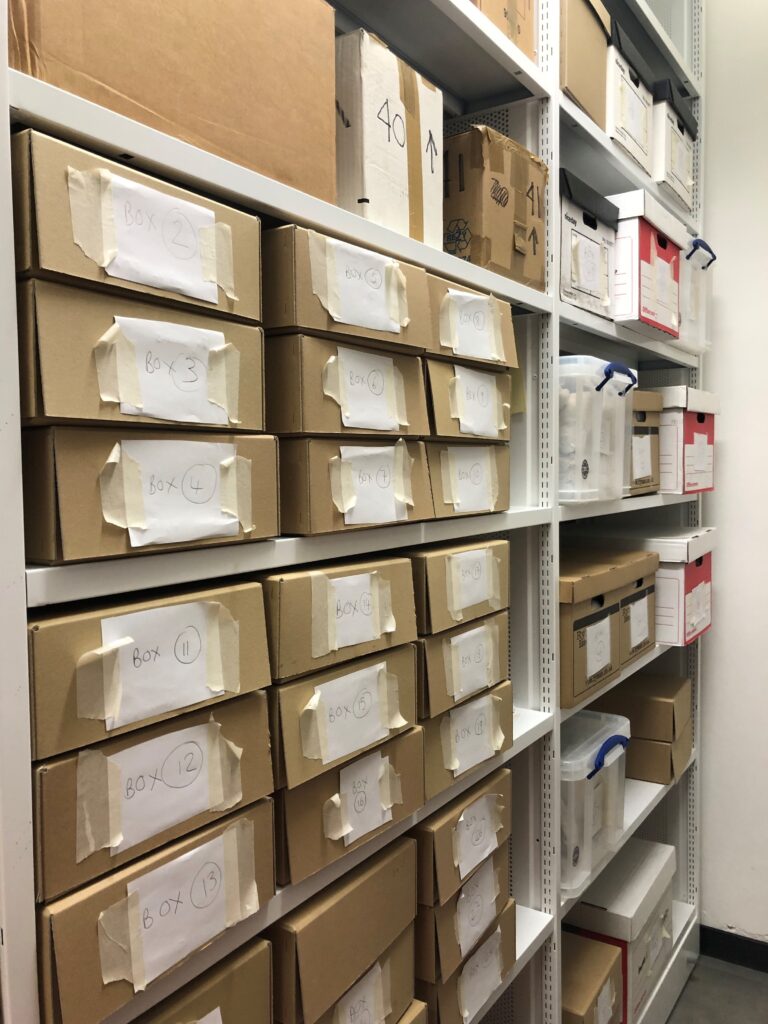
Previous housing: items stored in archival and banker boxes
When I first viewed the collection, it was housed in various boxes, which were cushioned with acid-free tissue paper to protect the ceramics. This would not suffice long term, because acid-free tissue paper eventually becomes acidic again and can damage collections. From an accessibility perspective, the lidded boxes were not ideal for this type of collection because you couldn’t easily view the items without removing them from their housing and handling them. In some cases items were stacked one on top of the other. It was important to think about the future of the collection by finding an alternative storage solution that would increase access, and also provide more stability long-term.
But you can’t put the shopping away without knowing what you’ve bought, right? I decided it was best to begin by getting to know the collection a little and understanding the type of objects that I would be rehousing. I checked items against the existing inventory, first re-measuring each item, and then checking that we had a corresponding image. I made a note of any missing items or items with an incorrect photo, so that any such items could be prioritised for visual documentation at a later date.
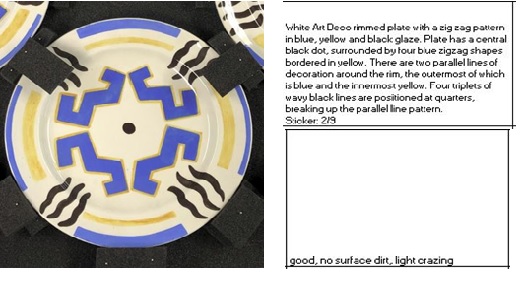
Plate with description and condition report
I compiled detailed descriptions and a condition report for each object as I went through. I’m not a ceramics expert, so I found it helpful to go back to basics and look at the language that other museums use when they talk about their ceramics in museum catalogues. I could then make my own language as accurate as possible. Like people, ceramics have mouths, necks, lips and bodies, and they come in many different shapes and sizes! They can be trumpet-shaped, globular, and tulip-shaped. I also focused closely on the language that is used to describe their condition specifically. For instance, the spidery cracks in glaze are called crazing, and small round holes in the glaze are called glaze pops. The visual data now corresponds directly with the information that we hold about each object, and an object can easily be identified from its description alone.
Once all the information was filled out and up to date, I could then begin moving the
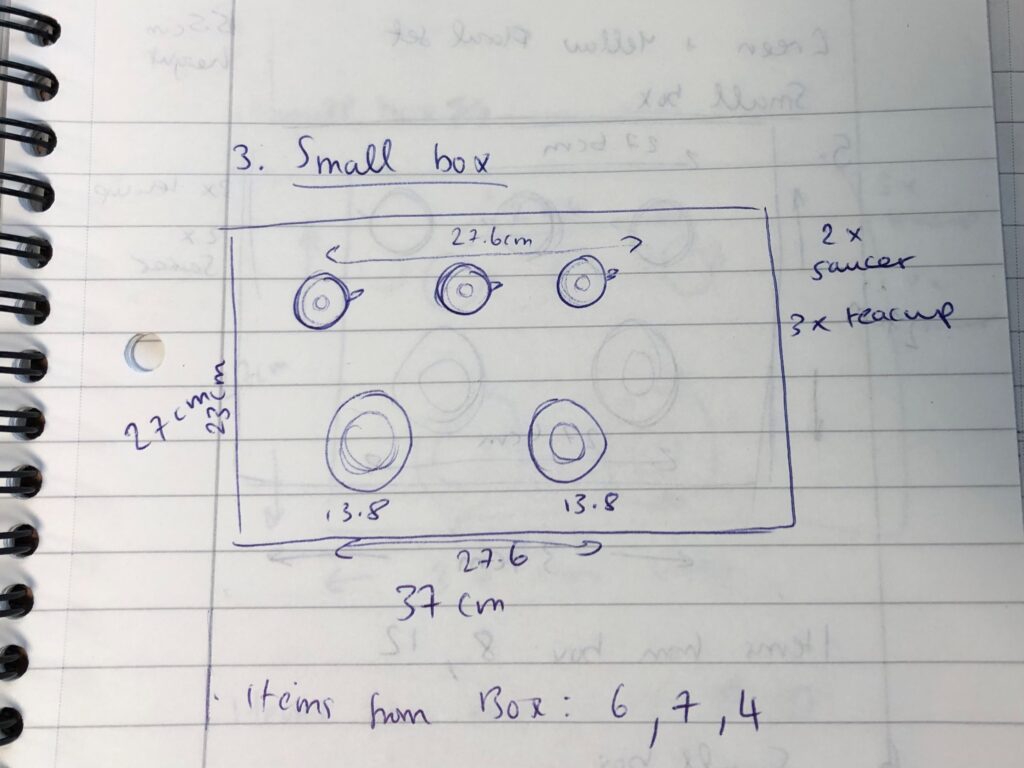
Layout plan for a tray
ceramics into their new home. The plan was to house them in stackable trays supported by a plastazote foam lining and offcuts that would be pinned in place to provide support for individual objects. As somebody who works best by visualising outcomes from the outset, it really helped at this stage to draw out a plan for the items in each tray. I looked at the measurements for each object and decided what size tray I would need for each item, based on its height and the depth of the tray. After this I was able to start separating items into groups that could be placed into the trays. This meant that not only did I know where each item was going to be rehoused, but also that I was able to better estimate the quantity of trays required, so that I didn’t over or under order materials.
Something important that I had to keep in mind was the sequence of items. This had to remain coherent. For example, it would not make sense to put items from the same set in, say, tray 1 and tray 10, rather it would make more sense to put them in tray 1 and 2.
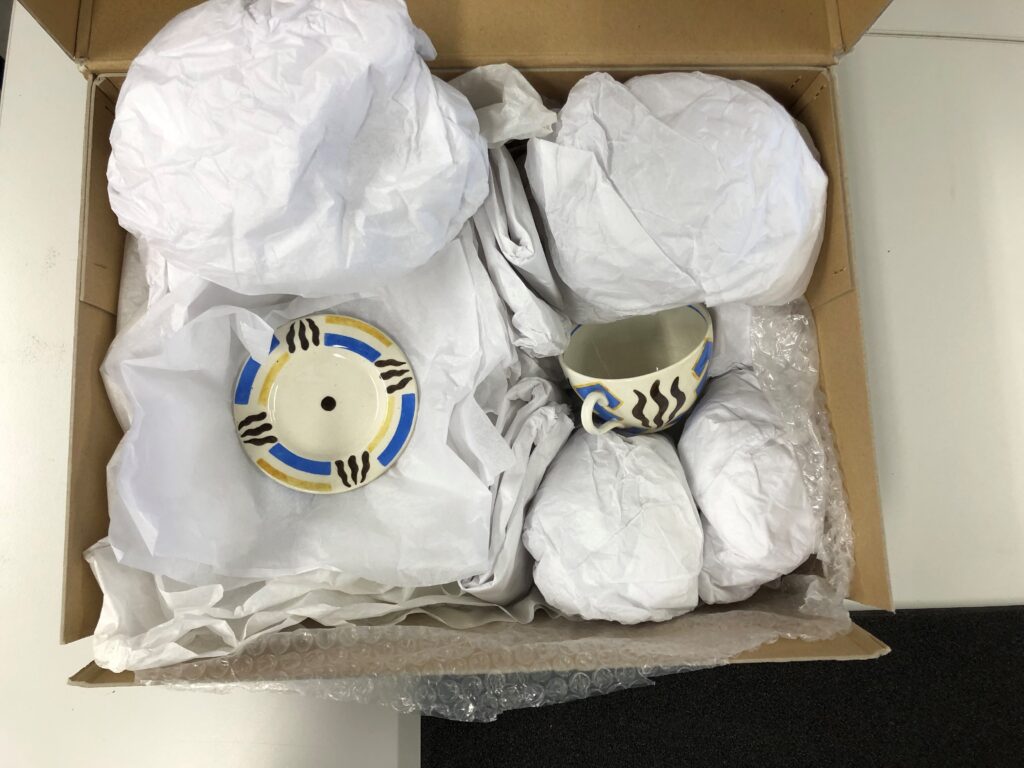
Items in their original box, supported by acid-free tissue paper
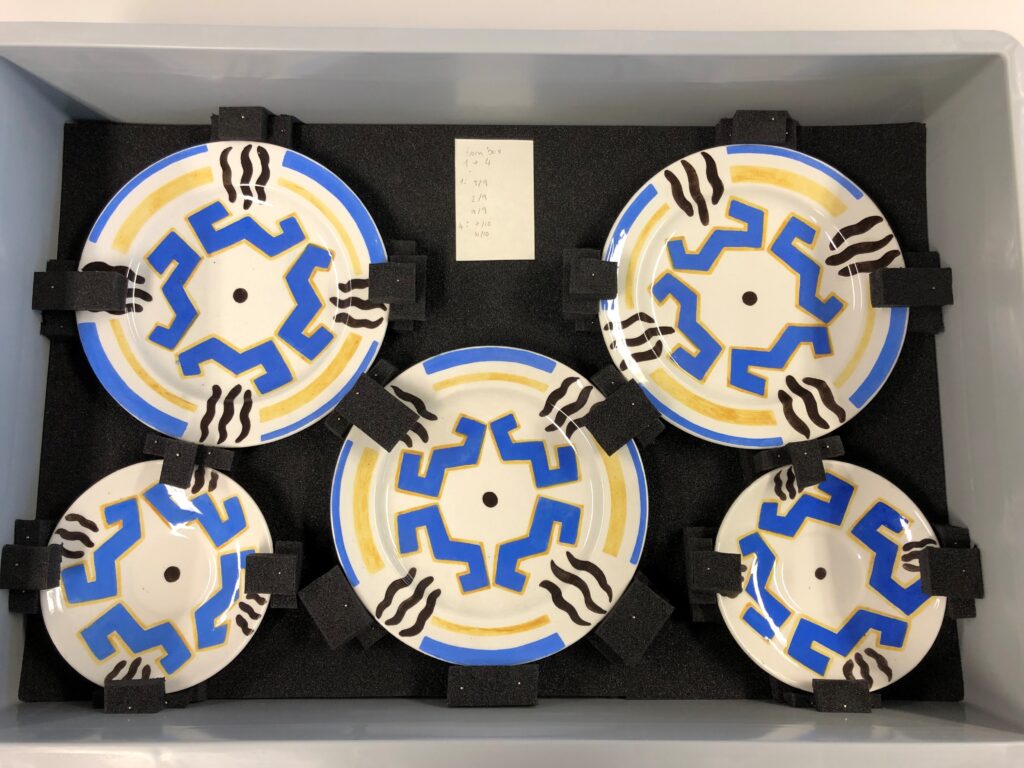
A set of plates in their tray, supported by a plastazote foam lining and pinned in place
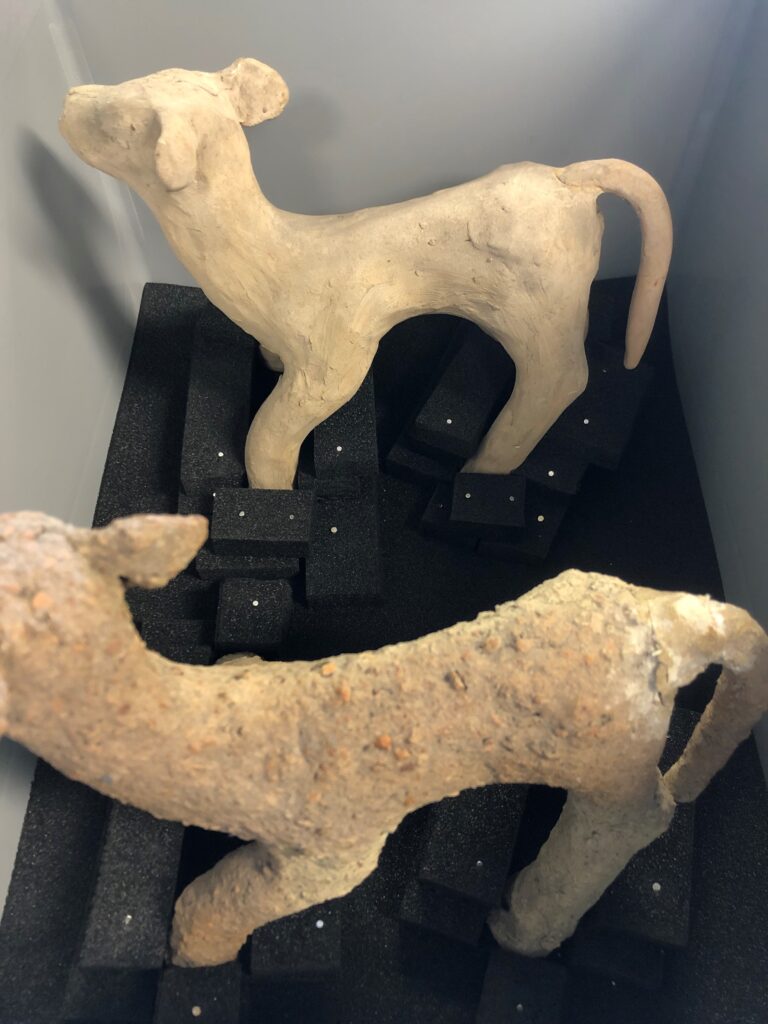
Standing proud: two lambs in their new housing
The rehousing part was really fun, but it did present some challenges. This was largely due to the variety of items in the collection. The ceramic animals were particularly tricky to rehouse. For instance, there was a box that contained two lambs, both of which had small, protruding parts such as ears and tails. Initially, I was planning to house these on their sides because I wasn’t sure how stable their legs were. I eventually decided that this made these areas too vulnerable, especially as one of the lambs already had a broken, re-attached tail. I made the decision to store them upright instead, and used the plastazote to provide additional support to the legs so that there was no chance of them slipping around in their tray. The result? Two happy lambs just in time for Easter!
Overall, I rehoused 50 boxes of ceramics, with 175 items in total finding a new home in the trays. It felt like a huge task to begin with, but after a fair amount of planning and a little problem solving it all came together. This beautiful collection is far more accessible, looks better on the shelves in the store, and is, most importantly, safe and secure. The Emma Gillies legacy lives on!
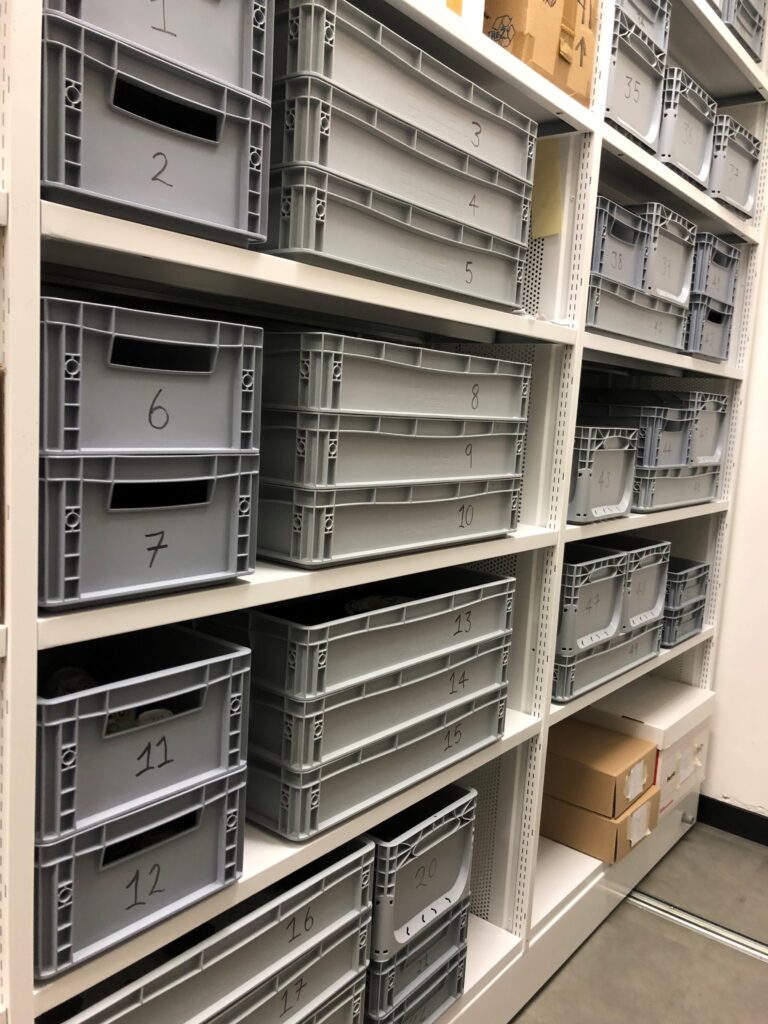
The Emma Gillies collection in its new housing!
